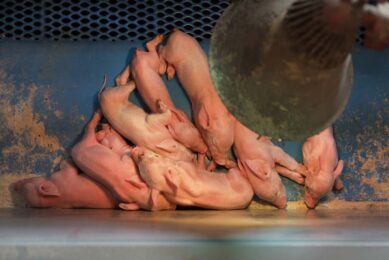New technical terms (II): Nutraceuticals

In his previous article John Gadd discussed epigenetics, the first of several new or newish concepts appearing in the technical pig press. Now John gives his explanations on what nutraceutical and accelerators are.
Nutraceuticals
The dictionary definition is a ‘health-enhancing product or strategy’. The term is now allied to feed supplements containing plant extracts. Other names being used for them are phytobiotics and the subject of phytogenetics – which only confuses people. The prefix ‘phyto’, meaning ‘plant life’ narrows it down to those products/strategies within the nutraceutical context. ‘Plant extracts’ and ‘green products’ may be less specific, but mean more to the newcomer. Many plants are recognised for the ability to promote growth and improve health – the old term for this latter was ‘herbal remedies’.
For the past 20 years a deluge of trial work has appeared on some 15 different plants, and this ignores those on fungi, seaweeds, spices and algae. Many commercial trials are optimistically positive, so which one to choose as an alternative to an antibiotic growth enhancer is difficult, especially as many of those I have read provide vague or no evidence of likely economic return. My advice is to ask the sales people the late-lamented Dr Gordon Rosen’s ‘Seven Questions’ on the likely validity of their trial work, especially farm trials, which I have published several times now. This helps to sort out ‘the men from the boys’ and so narrow the choice of any feed-additive – of which there are so many now, maybe 300 or more papers on 20 nutraceuticals? News spreading across the world of the antibiotic feed enhancer/growth ban has drowned the scramble of feet attempting to climb aboard this alternative bandwagon!
Maybe I am being a little cynical, as there must be some ‘men’ among all this deluge of products and it is good that several independent research establishments are investigating the way they might work, and then issue some guidance on their usefulness in physical performance terms. Then it is up to commentators like myself to put some cost-effective interpretation on their results.
Accelerators
These new arrivals within the past two years are interesting. They are fed to young pigs from the neonate onwards to the immediate post-weaning stage. Years ago, two nutritionist colleagues of mine at the company RHM Agriculture, Mick Hazzledine and Paul Toplis (who have both become eminent in the world of pig nutrition) agreed that how you managed and especially how you fed the baby pig could pay back up to threefold in performance by slaughter weight. And even more than that in economic return from better feed and new diets really early on.
But accelerators do more than just reformulate feed and a new diet. In Pig Progress’ ‘Feeding Young Animals’ Special Edition, published last year, Paul Toplis stated, “Accelerators have ‘non-nutrition’ features in how they perform and are produced, as well as compiling a list of ingredients, under wrappers, of course. Accelerators use a new production technology to activate specific ingredients that create a novel effect whose performance impact is greater than can be accounted for by the ingredients alone, by changing the way they are digested in the gut.”
One farmer said of my explanation… “Sounds to me like a re-launch of the old flavourings idea, maybe with probiotics thrown in!” No, as far as I know, while palatants and probiotics could well be a part of it, there is much more involved, possibly even the application of genomics – to be discussed next time.
As I see it, accelerators are not just short-term ‘digestive enhancers’ either. Fed at weaning they seem to have a carry-on effect through to slaughter beyond that of having a beneficial effect on an ideally-formulated pre-weaning food. Trials show that only 200 g/piglet of an accelerator from day 4 to weaning, fed against a good creep feed, markedly increased feed intake to 28 days. This alone kick-starts the weaner into better growth towards slaughter, but there may be a non-nutritive carry-over effect as well, especially after weaning when the gut struggles to deal with the change of feed. Beneficial micro-organisms may be involved in encouraging the immune system to react better to the challenges of commercial farm conditions. An accelerator therefore ‘switches on’ the neonate to help it reduce the inevitable post-weaning check to growth and then strengthen its post-weaning lifetime performance.
“Interesting!”
Well-known for his writing on pigs spanning 38 years, John Gadd has written over 2,600 articles and papers. His speciality is the cost-effectiveness of pig technology. Prior to becoming an independent writer and consultant, he had a long career in the British pig industry, from being stockman to chief pig advisor.
Read John Gadd’s earlier contribution on ‘New Technical Terms: Epigenitics’
Join 18,000+ subscribers
Subscribe to our newsletter to stay updated about all the need-to-know content in the pigsector, three times a week. Beheer
Beheer










 WP Admin
WP Admin  Bewerk bericht
Bewerk bericht